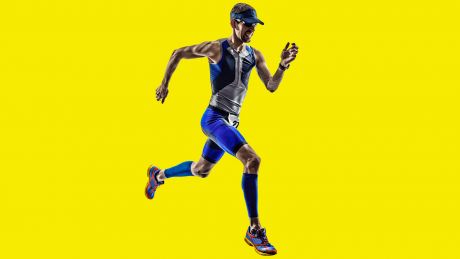5 Essential Questions Every Runner Should Answer
Whether you’re an experienced runner or a novice, make sure you’re armed with all this knowledge before you even tie up your laces

For five more must-answer questions for runners, check out Coach magazine. Find your free copy of Coach Magazine here
Gil “Coach G” Cramer has been running for 16 years and a professional coach for 14. He’s a qualified Pose technique instructor and a trail enthusiast, specialising in helping people find their love of running by preventing injuries and improving strength and endurance. So he’s well-placed to tell us five things all runners should know before putting their first foot forward.
1. Am I Resting Properly?
“The best rest isn’t lying in front of the TV watching endless repeats of Friends with a tub of Marks & Spencer’s Mini Bites, but active rest – low-intensity, low heart rate activities such as going to a yoga class or taking a walk in the park,” says Cramer. “Active rest is essential. For every workout, spend at least a fifth of that time again in active recovery. If you don’t finish the workout feeling better than when you started, your body isn’t recovering properly.”
2. Am I Training at the Right Time to Achieve My Goals?
“If you’re looking to beat your personal best, run in the morning after a healthy breakfast – you’ll be fresh from a good night’s sleep, nourished and mentally focused. Midday training is a great way to make yourself more productive because a short run around the park helps you refocus for the afternoon ahead. Running at the end of the day is best for burning extra calories – an evening session can help burn off any extra calories left over from the day, maintaining a high metabolism well into the night.”
3. Am I Hydrating Efficiently?
“When running, people often confuse a dry mouth with dehydration. They drink lots of fluids, yet still feel thirsty. That’s because hydration is about how much fluid you have in your cells, not the amount of fluid in your body. Water can’t get into our cells on its own, it needs electrolytes – the minerals that regulate the body’s fluid balance. The key is being able to tell when your body actually needs fluid (cramping is the most common sign you’re dehydrated) while maintaining the right balance between fluids and electrolytes.” Sports drinks and coconut water contain rehydrating electrolytes, as do some foods including bananas and olives.
4. Can I Understand What My Body Is Saying to Me?
“Know the difference between hard and soft pain. Soft pain, like breathlessness, can be managed during the session. Hard pain, often caused by injury or illness, is your body’s way of telling you to stop. When we describe ‘hitting a wall’ we’re often experiencing soft pain that goes away once we stop exercising. You won’t even get that far if you experience hard pain.”
5. Am I Paying Enough Attention to the Terrain?
“Natural surfaces like grass and sand are great for building strength in joints, tendons and ligaments, while increasing your body’s ability to adjust to its environment. If you’ve been practising on trails, stepping on a small rock while running shouldn’t be a problem – your body will instinctively know how to adjust to avoid major injury. Synthetic surfaces like tar, concrete and running tracks are good for speed work. You can use treadmills to test your fitness by whacking up the incline, but don’t fall into the trap of using a treadmill all the time. Running is supposed to be fun. If you’re stuck indoors on a little rubber belt sweating and panting like an MP filing his expenses form, it defeats the object.”
Get the Coach Newsletter
Sign up for workout ideas, training advice, reviews of the latest gear and more.
For five more must-answer questions for runners, check out Coach magazine. Find your free copy of Coach Magazine here
Coach is a health and fitness title. This byline is used for posting sponsored content, book extracts and the like. It is also used as a placeholder for articles published a long time ago when the original author is unclear. You can find out more about this publication and find the contact details of the editorial team on the About Us page.

